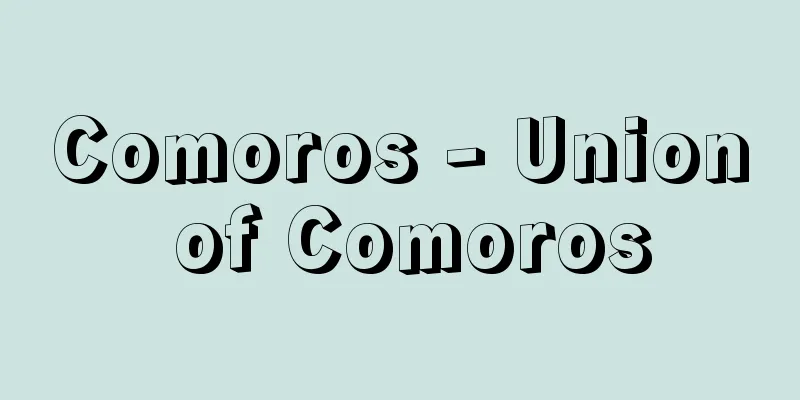Storytelling - Koudan

|
A traditional Japanese performing art centered on storytelling. Along with rakugo, it is known as zekkou arts and is one of the entertainments of vaudeville halls. It was once called koshaku, but since the Meiji period, kodan has been used more often. Both kodan and koshaku mean to explain the meaning of a book in an easy-to-understand way. In contrast to the "speak" in joruri (especially gidayubushi) and the "speak" in rakugo, kodan is "read." Originally, it was performed by a man alone, with a small table called a shakudai in front of him and a folding fan and wooden clappers, and the performer is called a koshakushi or kodanshi. It developed during the Edo period and reached its peak during the Meiji period, but has declined in recent years. Kodan originated from Buddhist sermons, Shinto commentaries, and classical commentaries, especially the reading of the Taiheiki. Narrator monks and talk monks who read the Taiheiki are thought to have existed in the latter half of the 15th century, but it was not until the Edo period that they appeared as entertainers. [Nobuhiro Shinji] Edo periodThe founder of the Edo tongue-reading arts is Oka Seibei, a Joruri puppeteer from around the Meireki period (1655-1658), who is known for his strong reading and is said to have won acclaim for his reading of "Taiheiki." Other notable Taiheiki readers from around the Genroku period (1688-1704) include Akamatsu Seizaemon and Akamatsu Seiryuken from Edo, Hosui and Dokyu from Osaka, and Hara Eitaku from Kyoto. Seizaemon came down from Kyoto and made Asakusa Mitsuke Gomonwaki his place of activity, so the lecture hall there was called the Taiheiki hall, which continued until the Meiji period. Readers of the Taiheiki eventually began to read military tales such as "Genpei Jōsuiki," "Mikawa Gofudoki," and "Soga Monogatari." A little later than the Genroku period, storytelling became more diverse in Edo with the appearance of Muto Genbei, Tamaru Saemon, Kanda Hakuryushi, who had access to a daimyo's household, and Ryozen, who gave humorous talks in the grounds of Sensoji Temple. In Kamigata, the well-known writers were Okamura Bunsuke and Sawamura Ayasuke, who read "Taikoki", Imaoka Tanba, who wrote "Tsurezuregusa", and Teshigawara Gennai, who specialized in "Adauchi", but the most famous was Masuho Zanko, who lectured on Shintoism and published eight books such as "Endo Tsugan" (1715), which explained the principle of the harmony of yin and yang between men and women. Shidoken, who followed in the footsteps of Reizen and Zanko, became a popular Edo man with his crazy lectures, and gave his lectures in a vulgar manner on a reed mat in front of the Asakusa Sansha Gongen Shrine. On the other hand, in the field of serious practical lectures, Shigeno Zuiryuuken, who also wrote "Kyojitsu Zatdanshu" (1749) and other works, Narita Jusen, author of "Taikoki," and Murakami Gyoen, author of "Date Sodo," were among those who gained popularity. Baba Bunko, who was executed in 1758 (8th year of the Horeki era) for lecturing on the peasant uprisings of Gujo, Mino Province, pioneered the field of domestic stories and breathed fresh air into it. Osaka's Yoshida Ippo adapted his signature story, "Iga no Vengeance," into "Iga Goe Norikake Kappa" in 1776 (5th year of the An'ei era) and received great acclaim. His pupils included Yoshida Tenzan and the second Yoshida Ippo. In Edo, the man who rivaled the first Ippo was Morikawa Bakoku, a pupil of Bunko, who promoted the entertainment value of storytelling, dividing the repertoire into military tales, family feuds, domestic stories, etc., and also improved the format of performances by dividing the repertoire into three parts, beginning with the use of opening acts. After Magoya, rakugo became more and more gentle, and Tourintei Togyoku in particular, with the awareness that a rakugo teacher was also an entertainer, tried to make his stories easy to understand. One of Togyoku's disciples was Koganei Kitabai, the founder of the Koganei school. Another of Magoya's disciples, Toryusai Bakin, went to Osaka and trained many disciples, and was instrumental in promoting exchange between the East and the West in the form of rakugo. He developed sewa rakugo with a style of performance that was popular among craftsmen, such as by changing the voices of the characters as they read. On the other hand, Ito Enshin, who believed that a rakugo teacher was not an entertainer, maintained the old standards and worked hard to improve the status of rakugo teachers, such as by obtaining permission from the magistrate's office to use the built-in stage. From this Ito school came Ito Enryo II, who handed down "Kanjincho" to Ichikawa Danjūrō VII. In 1842 (Tenpo 13), many vaudeville halls were abolished due to the Tenpo Reforms, and the repertoire was limited to military tales and Shinto lectures, but they were soon revived and more popular than ever. Kinjo Saitenzan, who perfected "Iga no Suigetsu," was the founder of the Teizan school, and from his school came the first Ichiryusai Teizan, author of "Gishi Den," and Murai Hajime, founder of the Murai school. Tanabe Nankaku, founder of the Tanabe school, produced Tsuyoshi Nanmado (who later founded the Shibata school), and from then on the Tanabe school took pride in its muhon. Other notables include Tanabe Nanryu I, author of "Kōetsu Gunki," and Kyokudō Nanrin, founder of the Kyokudō school. Hakusan, a disciple of Kanda Hakuryu I, who was of the same lineage as the Tanabe school, specialized in "Tenichibō," and his fellow disciple Hakuen opened the Shobayashi school under the name Shorintei. Ishikawa Ichimu, who became a big name without a teacher, made "Sakura Gimin Den" his selling point and performed with rakugo artists. Takarai Kinryō, author of "Tenpō Suikoden," and Kenkonbō Ryosai, author of "Kirare Yozaburō," also made waves in the world of rakugo at the end of the Edo period. Furthermore, Kyogen performers, including Kawatake Mokuami, actively dramatized lectures, which continued into the Meiji period. [Nobuhiro Shinji] After the Meiji PeriodAfter the Meiji Restoration, storytelling became more and more popular. In contrast to Ichiryusai Bunsha, who specialized in purse-cutting stories, Matsubayashi Hakuen II, who specialized in Shiranamimono stories, wrote stories such as "Nezumi Kozo" and "Tenpo Rokkasen." After the Restoration, he became a teacher at the request of the new government, and opened up new territory in newspaper storytelling by wearing Western clothes and using tables. Momokawa Joen I, who gave a lecture in front of Emperor Meiji together with Hakuen, came from the Ito school and specialized in stories such as "Hyakubyoden," and one of his students was Momokawa Minoru, who had a beautiful voice. Ito Chiyu, who later became a member of the House of Representatives, performed political storytelling. The group was full of talented people, including Hougyusha Torin, who separated from the Takarai school; Tanabe Nanryu II, who excelled in scenes of hell and was nicknamed "Nonnon"; Ito Ryocho V, who perfected "Tenpo Suikoden;" Kanda Hakusan II, who wrote "Tenichibo;" Muraoi Hajime, who wrote "Sayoginu Zoushi;" and Koganei Roshu II, who read scenes of hell. A storytelling guild was formed in 1881 (Meiji 14), but in 1891 it split into the Justice faction and the Mutsumi faction. It was eventually unified, but in 1905 (Meiji 38) it split into the Justice faction and the Comrades faction, and three years later it was united, but those who did not participate called themselves the Liberal faction. On the other hand, in the Kamigata region, Sanseisha Ippyo, Yamazaki Kinsho and others are well known, but the ones who stand out are Kanda Hakuryu, who published many shorthand books, and Tamada Gyokushusai II of Tachikawa Bunko. The decline of storytelling was rapid. In Kamigata, Kyokudo Nanryo II was the only one left by the Showa era, but in Tokyo, signs of this decline began to appear in the early 1890s, and it rapidly declined after the Russo-Japanese War. According to the Tokyo Guide published by Tokyo City Hall in 1906, there were a total of 141 vaudeville halls in Tokyo, of which 28 were for storytelling and 33 were for Naniwabushi. The city was also devastated by the Great Kanto Earthquake in 1923 (Taisho 12), and the economic recovery was short-lived, and although Naniwabushi, a type of storytelling, was popular, storytelling itself continued to be overshadowed by movies and reviews. However, the three great comedians who were active in the area were Kanda Hakusan III, whose specialty was "The Legend of Shimizu Jirocho," Kinjo Saitenzan III, who was known as a master of domestic comedy, Ichiryusai Teizan VI, who was the head of the Kodan Guild and the chairman of the Rakugo Association and was a master of "The Legend of the Gishi," and Oshima Hakukaku II, who was extremely popular for his cheerful style of performance. The Great Tokyo Air Raid that took Teizan's life also burned down the two remaining storytelling halls, Eikatei and Bunraku. After the Second World War, storytelling fell into a deep recession. Some storytelling halls, such as Sumiyoshitei in Tsukudajima, Tokyo, continued to exist and others closed, but Honmokutei in Ueno opened in September 1950. As the only regular venue, it managed to maintain its position thanks to the chivalrous spirit of its owner, who disregarded profitability. Furthermore, the awarding of the Naoki Prize for Kodan Honmokutei (1963), written by Ando Tsuruo, became an opportunity to draw public attention to storytelling, and Ichiryusai Teiho also took advantage of his popularity in the media and tried to find a way to revive storytelling, but he was unable to regain its former popularity. During this time, the 5th Kanda Hakuryu passed away in 1949, the 5th Tanabe Nanryu in 1954, the 4th Muraishi Teikichi in 1965, the 7th Ichiryusai Teizan in 1966, the 2nd Kanda Shori in 1967, the 5th Ichiryusai Sadatake in 1968, Hattori Shin in 1974, the 5th Kanda Hakusan in 1976, and the 5th Takarai Bakin in 1985, and finally, in January 1990 (Heisei 2), Honmokutei was closed. [Nobuhiro Shinji] ProgramIn the Edo period, the most important source of material for storytelling was novels written in the style of historical records. Various street tales and stories grew into tales by repeatedly switching between storytelling and novels written in the style of historical records. Military tales such as "Taikoki" are a direct descendant of the reading of the Taiheiki, and in particular the reading of battle scenes in a unique tone is called "shiraba" or "hiraba" (scenes of battle), which is considered a typical form of storytelling and was also used to train the throat of storytellers. "Soga Monzukushi" is a famous example. Kinbusumamono (stories about gold doors) (hyoujomono) include "Kaga Sodo" (The Kaga Uprising), political stories include "Ooka Seidan" (Ooka Political Affairs), revenge stories include "Gishiden" (The Gishi's Tale) and "Iga no Suigetsu" (The Iga Water Moon), martial arts stories include "Kan'ei Sanbajutsu" (The Kan'ei Three Horses), and sanshakumono (a name derived from the fact that gangsters wore three-foot sashes) include "Tenpo Suikoden" (The Tenpo Suikoden). Other popular stories included biographies of high priests such as "Nichirenki" (The Nichiren-ki), and biographies of sumo wrestlers such as "Sekitori Senryo Nobori" (The Sumo Wrestler's Thousand Ryo Banner). Sewamono (domestic stories) depicting the world of townspeople include "Tenpo Rokkasen" (The Tenpo Rokkasen), and those with a thief as the main character, such as "Nezumi Kozo," are called shiranamimono (traditional Japanese stories). On the other hand, in contrast to long stories that maintain traditional styles such as war stories, short stories such as sewamono are called hamono (horse stories) or issekimono (one-seat stories). In the Meiji period, new fields such as newspaper storytelling, literary storytelling, and translated storytelling emerged, and political storytelling includes works such as "The Legend of Hoshi Toru," while sports storytelling from the Showa period includes "The Tokyo Olympic Entrance Ceremony." [Nobuhiro Shinji] Current StatusKodan has lost a trace of its former glory days, and with the diversification of entertainment, it has been overtaken by rakugo, movies, television, etc., and has declined along with Naniwabushi. In Tokyo, it is divided into the Kodan Association (chairman Ichiryusai Teisui 6th) and the Japan Kodan Association (chairman Kanda Matsukoi 3rd), with the former consisting of Ichiryusai Teisui 6th, Takarai Bakin 6th, Tanabe Ittaku, and others, and the latter consisting of Kanda Matsukoi 3rd, Kanda Aizan 2nd, and others. In Osaka, Kyokudo Nanryo 4th (1949-2020) and others are active. There is also the Kamigata Kodan Association. The reasons for the decline include the fact that the length of the story, which allows for multiple consecutive readings, is no longer in line with the pace of today's life, the fact that weekly magazines and television reports are more interesting than hearing the truth of daily events and the dark side of politics through a lecturer, and the lack of skilled performers. However, there are some positive news points, such as the opening of the National Theater Engeijo in Tokyo in 1979 (Showa 54), the increase in female lecturers, and the fact that Nanryo is no longer the only one in Osaka. In 1997 (Heisei 9), the second generation Kanda Sanyo, the third generation Kyokudo Nanryo, and the sixth generation Koganei Shishu were recognized as intangible cultural properties that require measures such as creating records, and in 2002, the sixth generation Ichiryusai Teisui was recognized as a holder of an important intangible cultural property (living national treasure). To learn about the current state of the world of kodan, the monthly magazine Kodan Kenkyu (published monthly and discontinued with the July 2006 issue) edited by Tanabe Koji is a valuable resource. [Nobuhiro Shinji] "Five Hundred Years of Kodan" by Sano Takashi (1943, Tsuru Shobo)" ▽ "A Study of Kodan Rakugo (originally titled Kodan Rakugo Now and Then Tales) by Sekine Mokuan (1967, Yuzankaku Publishing)" ▽ "Kodan Rakugo Now and Then Tales by Sekine Mokuan and edited by Yamamoto Susumu (1999, Heibonsha, Toyo Bunko)" ▽ "Collection of Historical Materials on Japanese Popular Culture 8: Variety Shows and Spectacles" edited by Nakamura Yukihiko et al. (1976, San'ichi Shobo)" ▽ "Collection of Writings by Nakamura Yukihiko 10: Literary Discourse on Tongue-Cultivation (1983, Chuokoron-Shinsha)" ▽ "Chronology of Kodan in the Meiji Era" by Yoshizawa Hideaki (1979, privately published)" ▽ "Collection of Materials on Popular Performing Arts 5: Kodan" edited by Yoshizawa Hideaki (1981, San'ichi Shobo)" ▽ "The Taisho Chronology of Kodan, by Yoshizawa Hideaki (1981, privately published)" ▽ "The Showa Chronology of Kodan, by Yoshizawa Hideaki, all 3 volumes (1987-1991, privately published)" ▽ "A Collection of Meiji Period Shorthand Books of Kodan, by Yoshizawa Hideaki (1995, privately published)" ▽ "The Draft Chronology of Matsubayashi Hakuen II, by Yoshizawa Hideaki (1997, Nemugyusha)" ▽ "The Light of Honmokutei Will Not Be Extinguished -- A Life Story of Ishii Eiko, the Host" by Ishii Eiko (1991, Jinjindo Publishing)" ▽ "Basic Research on Shorthand Books of Performing Arts in Osaka in the Meiji Period, by Kyokudou Konanryo III, Basic Research on Shorthand Books of Performing Arts in Osaka in the Meiji Period, Continued" (1994, 2000, Taru Publishing)" ▽ "Everything about Traditional Storytelling and Kodan" by Abe Kazue (1999, Yuzankaku Publishing) " "Kodan Honmokutei" by Ando Tsuruo (Obunsha Bunko, Chikuma Bunko) [References] | | |Enshin Ito| | | | Kanda| | | | | | | | Tanabe| | | Hattori| | | | | [Supplementary information] |A lecturer from the mid-Edo period. He holds a piece of wood in the shape of a penis and delivers obscene lectures. "Portrait Collection" (manuscript held at the National Diet Library ) Shidoken Source: Shogakukan Encyclopedia Nipponica About Encyclopedia Nipponica Information | Legend |
|
話術を中心にした日本の伝統芸能。落語などとともに舌耕(ぜっこう)芸といわれ、寄席(よせ)演芸の一つ。かつては講釈ともよばれたが、明治以後は講談のほうが多く用いられる。講談、講釈ともに書物の文意・語義をわかりやすく説き聞かせる意である。浄瑠璃(じょうるり)(とくに義太夫節(ぎだゆうぶし))の「かたる」、落語の「はなす」に対して、講談は「よむ」という。釈台(しゃくだい)という小机を前に置き、張扇(はりせん)や拍子木などを用いて、男子1人で演ずるのが本来の姿で、演者を講釈師、講談師と称する。江戸時代に発展し、明治時代に最盛期を迎えたが、近年は衰微している。 講談は、仏教の説教、神道講釈、古典講釈、ことに太平記読みなどを源流として成立した。『太平記』を読む物語僧、談義僧は15世紀後半には存在したと思われるが、芸能者として姿を現すのは江戸時代に入ってからである。 [延広真治] 江戸時代江戸舌耕師の祖と称せられるのが、明暦(めいれき)(1655~1658)ごろの浄瑠璃作者岡清兵衛(おかせいべえ)で、強記で知られ、『太平記』を読んで喝采(かっさい)を博したと伝えられる。続いて元禄(げんろく)(1688~1704)ごろの著名な太平記読みとして、江戸の赤松清左衛門、赤松青竜軒(せいりゅうけん)、大坂の甫水(ほすい)、道久(どうきゅう)、京都の原栄宅(はらえいたく)らが知られる。清左衛門は京から下り、浅草見付御門脇(わき)を活躍の場としたため、この地の講釈場を太平記場と称し、明治まで続いた。太平記読みはやがて『源平盛衰記』『三河後風土記(みかわごふどき)』『曽我(そが)物語』などの軍談も読むようになった。 元禄期よりやや時代が下ると、江戸では、武藤源兵衛(むとうげんべえ)、田丸佐右衛門(たまるさえもん)、大名家出入りの神田白竜子(かんだはくりゅうし)、浅草寺境内で笑談義を行った霊全(りょうぜん)らが現れ、講談の多様化が進んだ。上方(かみがた)では、『太閤記(たいこうき)』を読んだ岡本文助や沢村綾助(あやすけ)、『徒然草(つれづれぐさ)』の今岡丹波(たんば)、『非人仇討(あだうち)』を得意とした勅使川原源内(てしがわらげんない)らが知られるが、もっとも聞こえたのは神道講釈の増穂残口(ますほざんこう)で、男女陰陽和合の理を説く『艶道通鑑(えんどうつがん)』(1715)などの残口八部書を刊行した。霊全や残口の流れをくんだ狂講で江戸の人気男となったのが志道軒(しどうけん)で、浅草三社権現前の葭簀(よしず)張りの中で猥雑(わいざつ)な仕方講釈を行った。一方まじめな実講では、『虚実雑談集』(1749)などの著述もある滋野瑞竜軒(しげのずいりゅうけん)、『太閤記』の成田寿仙(じゅせん)、『伊達(だて)騒動』の村上魚淵(ぎょえん)らが人気を得た。 1758年(宝暦8)に美濃郡上(みのぐじょう)の百姓一揆(いっき)を講じて処刑された馬場文耕(ぶんこう)は、世話物の分野を開拓し、新風を吹き込んだ。大坂の吉田一保(いっぽう)は、持ちネタの『伊賀の仇討』が1776年(安永5)に『伊賀越乗掛合羽(いがごえのりかけがっぱ)』として脚色され大好評を博した。その門より吉田天山、2代吉田一保が出た。江戸で初代一保に匹敵するのは文耕門人森川馬谷(ばこく)で、講談の娯楽化を推進し、演目を軍談・御家騒動・世話物などに区別し、また初・中・後の3段に分け、前座を使うことを始めるなど興行の形態を整えた。馬谷以後ますます講談は軟らかくなり、ことに桃林亭東玉(とうりんていとうぎょく)は、講釈師は芸人なりとの自覚から、わかりやすい講談を心がけた。この東玉の門からは小金井派の祖小金井北梅が出た。また、馬谷の門人の東流斎馬琴(とうりゅうさいばきん)は大坂に上り多数の門人を育て、講釈種の東西交流に功があり、登場人物の音声を変えて読むなど、職人受けのする芸風で世話講談を発展させた。他方、講釈師は芸人にあらずとの信念をもつ伊東燕晋(いとうえんしん)は、古格を守り、奉行(ぶぎょう)所から備え付けの高座使用の許可を得るなど、講釈師の身分向上に尽くした。この伊東派からは、7世市川団十郎に『勧進帳』を伝えた2代伊東燕凌(えんりょう)が出る。 1842年(天保13)、天保(てんぽう)の改革のため多くの寄席が廃止され、演目も軍談や神道講釈などに制限されたが、やがて復活し、以前にもまして盛んになった。『伊賀の水月(すいげつ)』を練り上げた金上斎典山(きんじょうさいてんざん)は貞山(ていざん)派の祖で、その門より『義士伝』の初代一竜斎(いちりゅうさい)貞山、邑井(むらい)派の祖邑井一(はじめ)らが出た。田辺派の祖田辺南鶴(なんかく)の門から強記の南窓(のち柴田(しばた)派を開く)が出、以後田辺派は無本を誇りとした。ほかに『甲越軍記(こうえつぐんき)』の初代田辺南竜(なんりゅう)、旭堂(あさひどう)派の祖旭堂南麟(なんりん)が聞こえる。田辺派と同系の初代神田伯竜(はくりゅう)の門人伯山は『天一坊(てんいちぼう)』を得意とし、同門の伯円は松林亭(しょうりんてい)を名のって松林派を開いた。師なしで大看板となった石川一夢(いちむ)は『佐倉義民伝』を売り物とし、落語家と共演した。また『天保水滸伝(てんぽうすいこでん)』の作者宝井琴凌(きんりょう)、『切られ与三郎』の作者乾坤坊良斎(けんこんぼうりょうさい)も幕末の釈界をにぎわした。また河竹黙阿弥(もくあみ)はじめ、狂言作者は盛んに講釈種を劇化し、明治に至る。 [延広真治] 明治以降明治維新以後、講談はますます盛んとなった。巾着(きんちゃく)切り物の一立斎文車(いちりゅうさいぶんしゃ)に対して白浪物(しらなみもの)を得意とした2代松林伯円(はくえん)は、『鼠小僧(ねずみこぞう)』『天保六花撰(てんぽうろっかせん)』などを創作し、維新後は新政府の意向を受けて教導職となり、洋服着用、テーブルを用い、新聞講談の新領域を開いた。この伯円とともに明治天皇の御前講演を行った初代桃川如燕(ももかわじょえん)は、伊東派より出、『百猫伝(ひゃくびょうでん)』などを得意としたが、門人に美声の桃川実がいる。のちに衆議院議員にもなった伊藤痴遊(ちゆう)は、政治講談を行った。宝井派より独立した放牛舎桃林(ほうぎゅうしゃとうりん)、修羅場が得意で「のんのん」の異名をとった2代田辺南竜、『天保水滸伝』を練り上げた5代伊東陵潮(りょうちょう)、『天一坊』の2代神田伯山、『小夜衣草紙(さよぎぬぞうし)』の邑井一、修羅場読みの2代小金井芦洲(ろしゅう)ら多士済々であった。1881年(明治14)に講談組合が結成されたものの、1891年には正義派と睦(むつみ)派に分裂。やがて統一されたが、1905年(明治38)正義派と同志派に分かれ、3年後に合同なったが、不参加者が自由派を名のった。一方、上方では三省社一瓢(さんせいしゃいっぴょう)、山崎琴書(きんしょ)らが知られるが、異彩を放つのは、速記本を多数刊行した神田伯竜、立川文庫の2代玉田玉秀斎(たまだぎょくしゅうさい)である。 講談の凋落(ちょうらく)は急であった。上方ではついに昭和に入っては2代旭堂南陵(きょくどうなんりょう)1人となったが、東京においても明治30年代初めよりその兆候が現れ、日露戦争を境に急速に衰えていった。1906年の東京市役所発行「東京案内」によると、東京の寄席の総数141、うち講談席28、浪花節(なにわぶし)席は33となっている。さらに1923年(大正12)の関東大震災で打ちのめされ、復興景気もつかのま、講釈種の浪花節はもてはやされたものの、講談自体は映画やレビューなどに圧倒され続けた。とはいえ、『清水次郎長伝』を売り物にした3代神田伯山、ことに世話物を得意として名人とうたわれた3代錦城斎典山(きんじょうさいてんざん)、講談組合頭取と落語協会会長をも兼ね『義士伝』を得意とした6代一竜斎貞山、明るい芸風で人気抜群であった2代大島伯鶴(はっかく)らが活躍した。その貞山の命を奪った東京大空襲は、2軒残った講釈場、永花亭(えいかてい)、聞楽(ぶんらく)も焼き尽くした。 第二次世界大戦後、講談はいよいよ不振を極めた。東京・佃島(つくだじま)の住吉亭など講釈場の存廃はあったが、1950年(昭和25)9月上野の本牧亭(ほんもくてい)が開場、唯一の定席として採算を度外視した席亭の侠気(きょうき)により、かろうじてその城を確保した。さらに安藤鶴夫(つるお)著『巷談(こうだん)本牧亭』(1963)の直木賞受賞が講談に世人の関心を集める契機となり、一竜斎貞鳳(ていほう)もマスコミでの人気を利して、講談復興への手掛りを模索したが、かつての人気を取り戻せなかった。この間、1949年には5代神田伯竜、1954年5代田辺南竜、1965年4代邑井貞吉(ていきち)、1966年7代一竜斎貞山、1967年2代神田松鯉(しょうり)、1968年5代一竜斎貞丈、1974年服部伸(はっとりしん)、1976年5代神田伯山、1985年5代宝井馬琴が没し、ついに1990年(平成2)1月、本牧亭は閉鎖された。 [延広真治] 演目講談の素材として、江戸時代もっとも重要なのは実録体小説であった。種々の街談巷説は、講談と実録体小説との間の出入りを繰り返して、説話として成長した。『太閤記』等の軍談は太平記読みの直系で、ことに合戦の模様を独特の調子をつけて読むのを修羅場(しらば、ひらば)と称し、講談の典型とされ、講釈師ののどの鍛練にも用いられた。『曽我紋尽(そがもんづく)し』等が有名である。金襖物(きんぶすまもの)(評定物(ひょうじょうもの))には『加賀騒動』等があり、政談には『大岡政談』等、仇討物には『義士伝』『伊賀の水月』等、武芸物には『寛永(かんえい)三馬術』等があり、三尺物(侠客が三尺帯を締めていたところから出た呼称)に『天保水滸伝』等がある。ほかに、『日蓮(にちれん)記』等の高僧伝、『関取千両幟(せきとりせんりょうのぼり)』等の力士伝なども好まれた。町人の世界を描いた世話物には、『天保六花撰』等があり、『鼠小僧』のようにことに泥棒を主人公とするものを白浪物とよぶ。一方、軍談など古格を守った長い読み物に対して、世話物などの短い読み物を端物(はもの)または一席物という。明治期に入って、新聞講談、文芸講談、翻訳講談などの新しい分野も開け、政治講談には『星亨(ほしとおる)伝』等、昭和期のスポーツ講談には『東京オリンピック入場式』等もある。 [延広真治] 現況講談はかつての全盛期のおもかげはなく、娯楽の多様化で落語、映画、テレビなどに追われ、浪花節とともに衰微している。東京は講談協会(会長6代一竜斎貞水(ていすい))と日本講談協会(会長3代神田松鯉)に別れ、前者に6代一竜斎貞水、6代宝井馬琴、田辺一鶴らが所属し、後者は3代神田松鯉、2代神田愛山(あいざん)らで形成されている。大阪では4代旭堂南陵(きょくどうなんりょう)(1949―2020)らが活躍。上方講談協会がある。 衰微の原因には、何席も連続して読み続けられる長さが、今日の生活の速度にあわなくなったこと、日々起こる事件の真相や政治の裏面を講釈師を通して聴くよりも、週刊誌やテレビの報道のほうがおもしろいこと、名人上手に乏しいことなどがあげられよう。しかし、東京では1979年(昭和54)に国立劇場演芸場が開場したこと、女流講釈師の増加、大阪では南陵ただ1人の状態から脱したことなどが明るい話題である。また、1997年(平成9)2代神田山陽(さんよう)、3代旭堂南陵、6代小金井芦洲の3名が記録作成等の措置を講ずべき無形文化財の認定を、2002年には6代一竜斎貞水が重要無形文化財保持者(人間国宝)の認定を受けた。なお釈界の現況を知るには、田辺孝治編集『講談研究』(月刊。2006年7月号をもって休刊)が重宝である。 [延広真治] 『佐野孝著『講談五百年』(1943・鶴書房)』▽『関根黙庵著『講談落語考(原題「講談落語今昔譚」)』(1967・雄山閣出版)』▽『関根黙庵著、山本進編『講談落語今昔譚』(1999・平凡社・東洋文庫)』▽『中村幸彦他編『日本庶民文化史料集成8 寄席・見世物』(1976・三一書房)』▽『『中村幸彦著述集10 舌耕文学談』(1983・中央公論社)』▽『吉沢英明著『講談明治編年史』(1979・私家版)』▽『吉沢英明編『大衆芸能資料集成5 講談』(1981・三一書房)』▽『吉沢英明著『講談大正編年史』(1981・私家版)』▽『吉沢英明著『講談昭和編年史』全3巻(1987~1991・私家版)』▽『吉沢英明著『講談明治期速記本集覧』(1995・私家版)』▽『吉沢英明著『二代松林伯円年譜稿』(1997・眠牛舎)』▽『石井英子著『本牧亭の灯は消えず――席亭・石井英子一代記』(1991・駸々堂出版)』▽『3代目旭堂小南陵著『明治期大阪の演芸速記本基礎研究』『明治期大阪の演芸速記本基礎研究 続』(1994、2000・たる出版)』▽『阿部主計著『伝統話芸・講談のすべて』(1999・雄山閣出版)』▽『安藤鶴夫著『巷談本牧亭』(旺文社文庫・ちくま文庫)』 [参照項目] | | | | | | | | | | | | | | | | | | | | | | | | [補完資料] |江戸中期の講釈師。男根形の木片を持ち、仕方で猥雑な講釈を演ずる。『肖像集』 写本国立国会図書館所蔵"> 志道軒 出典 小学館 日本大百科全書(ニッポニカ)日本大百科全書(ニッポニカ)について 情報 | 凡例 |
Recommend
Khaddar
…Khaddar, also known as hand-woven cotton cloth, ...
Earth spider - Earth spider
Title of a Noh or Kabuki dance piece. (1) Noh Depe...
August Dance - Hachigatsuodori
This dance is danced in the harvest festival in A...
scalar
A quantity that can be expressed as a single real ...
Kalmar Strait - Kalmar
…An island in the Baltic Sea, southeast of Sweden...
Taku Oe
Year of death: September 12, 1921 Year of birth: 2...
Pilea - Pirea
A general term for the genus Pilea in the Urticac...
Alpha-Methylacrylic Acid
...α-methylacrylic acid is a compound word of met...
City Boat Commander - Shihakushi
An office in charge of maritime trade in China. I...
Student Labor Mobilization - Gakukinro Doin
The forced mobilization of students to the industr...
Convection - taiyu
When water is placed in a kettle and heated from ...
Oki Airport - Oki
An airport in Okinoshima Town, Oki District, Shima...
Silicon monoxide (silicon monoxide) - Issankakeiso (English spelling) silicon monoxide
Chemical formula: SiO. Also known as monox. An opa...
Provisional Budget - Zanteyosan
If the budget for a certain fiscal year is not pa...
Nguyen Van Thieu (English)
1923‐2001 South Vietnamese soldier and politician....









